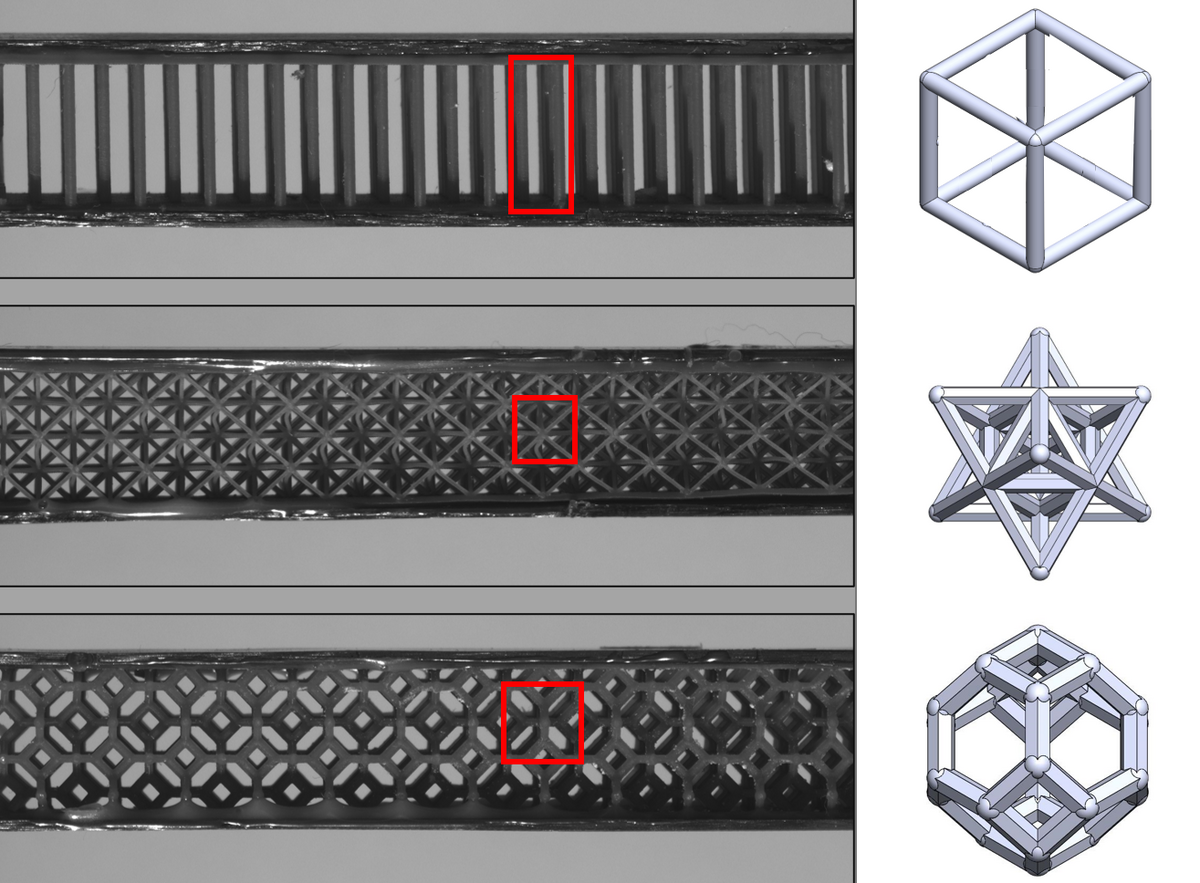"It's really interesting," says Michelle Lund Sahl Hedvard before starting an elaborate explanation about the importance of bonding, metamaterials, physics, mechanics, and the geometry of material properties.
Michelle is studying for an MSc in Engineering in mechanics at Aarhus University, and she has just completed a preliminary project for her Master's thesis, in which she aims to develop and test metamaterials in a new project in collaboration with researchers from both Aarhus University and the University of Edinburgh.
Briefly, the project is about designing new materials to replace adhesives for large joints. For example, this could be for wind turbine blades, where adhesive joints can be several centimetres thick, span over tens of meters and weigh a few hundred kilograms per blade.
"The joints are large, because this makes the components being worked on much easier to produce. If the joints were very thin, all the components would have to be made perfectly, and that’s virtually impossible given the dimensions we’re dealing with for wind turbine blades," she says and continues:
"And the stresses that arise in the blade are not ideally transferred. By using specially designed metamaterials instead of adhesive, we can make the joints lighter, far stronger and better at absorbing vibrations.”
Michelle Lund Sahl Hedvard was born and raised in the small village of Mørke in the outskirts of Aarhus. She’s always been fond of maths and physics and natural sciences and after high school she moved to Aarhus to start at the university.
Her first choice of study didn't go quite as planned however, and therefore she started looking at the engineering courses.
"I lacked a practical approach to things. I needed something more application-oriented,” she says.
Her boyfriend’s sister told her about the mechanical engineering studies at the university, and she was readily persuaded to give it a go.
“I’m very happy, I chose mechanical engineering in the end. I very much enjoy the practicality of engineering sciences; the need to dig deep into the theory of physics and mechanics in order to fully understand a given problem so we can solve it. So that we can develop and improve technology for the future. That’s what engineers do: solve problems. I like that approach,” she says.
Read more below the picture

Metamaterials are materials designed to have different properties than the classical homogeneous materials that are e.g. casted as nowadays adhesives.
By giving material a geometrical structure, Michelle can determine the material's properties:
"This means that you can design your own materials and manipulate their behaviour, thus opening up for a wealth of possible applications," she says.
In her preliminary project, Michelle has developed a model that can simulate geometrical multiscale structures. She will use this for her Master's thesis, in which she will examine the mechanical properties of structures, 3D print them and then experiment with them.
And the first steps are already well under way as Michelle has received a scholarship from the Aarhus University Centre for Integrated Materials Research, iMAT, to visit the metamaterials research group at the University of Edinburgh and delve deeper into the theory behind metamaterials.
"Michelle is experimenting with a very exciting project and the perspectives are huge,” says her supervisor Associate Professor Michal Budzik from the Department of Mechanical and Production Engineering:
"The use of metamaterials in industry is still very limited, and our approach in this project, where we combine metamaterials with adhesives, is completely new and has enormous potential. Adhesives are used in virtually all industries, and their use is constantly growing. With metamaterials, we can reduce the amount of adhesives for some applications by factors of hundreds or even thousands, while also making the joints stronger.”
Michal Budzik also stresses that metamaterial based bondlines can be vital for the green transition in the field of adhesive bonding, not only due to significantly smaller required quantities of materials used, but also because geometrical structuring can lead to much easier reuse of materials that are joined together.
Michelle does not know what the future will bring after her Master’s thesis, but she is already considering applying for a PhD programme.
"I like learning and delving into something new. And this is something completely new. It's really exciting, and it’d be great to spend three years looking even more closely into it and seeing what it can lead to," she says.
The metamaterial project is being headed by Associate Professor Michal Budzik from Aarhus University and Senior Lecturer Marcelo Dias from the University of Edinburgh.
Aarhus University and the University of Edinburgh is soon releasing the publication "Can confined mechanical metamaterials replace adhesives?” – look for it in the Extreme Mechanics Letters journal.
You can also contact Michal Budzik here.